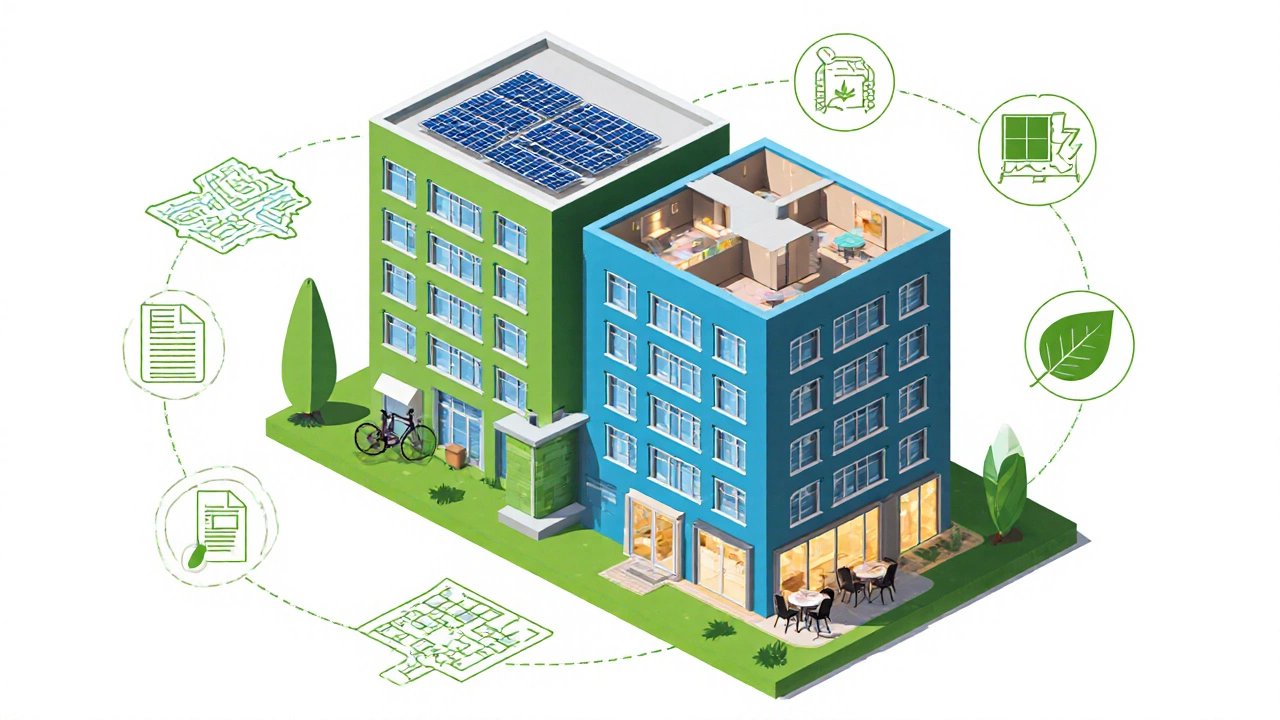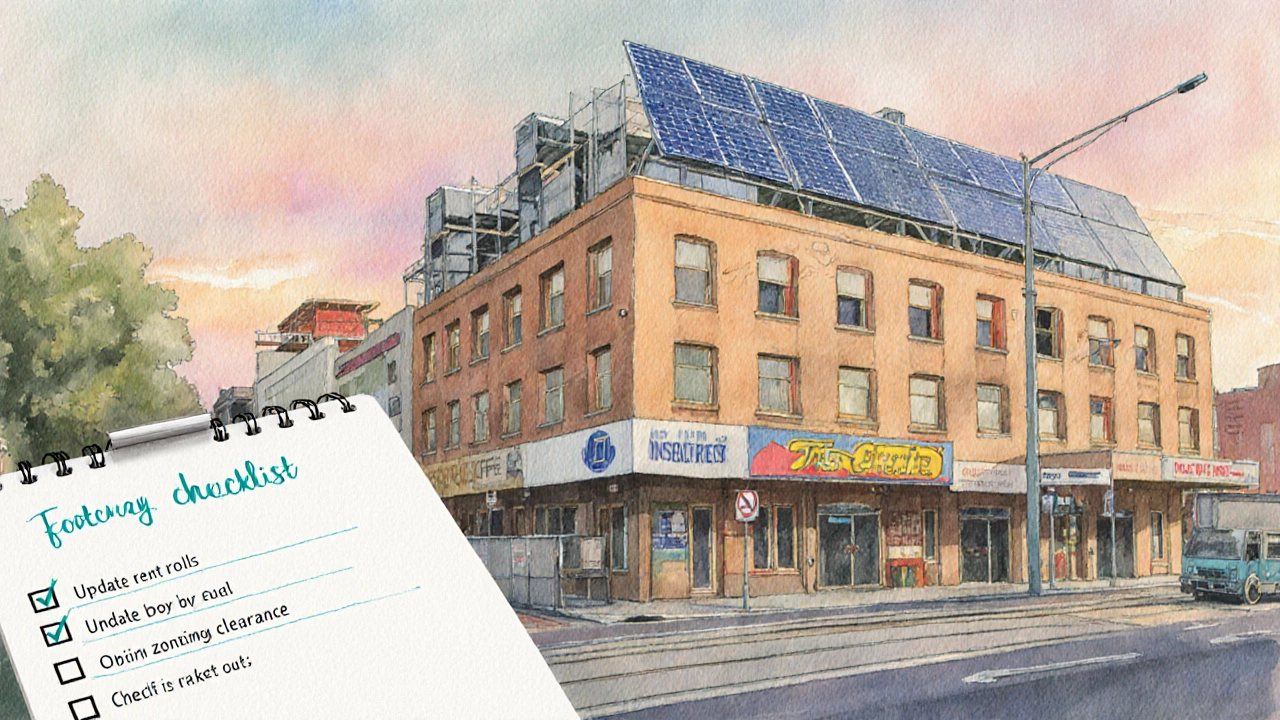Commercial Property Valuation Calculator
How It Works
This calculator uses the income approach, which is ideal for income-generating properties like offices and retail. The formula is: Property Value = Net Operating Income (NOI) ÷ Capitalization Rate (Cap Rate)
- Net Operating Income (NOI): Annual rental income minus operating expenses
- Capitalization Rate (Cap Rate): Market risk-adjusted return expectation
When you hear the phrase commercial value, you might picture a fancy spreadsheet or a mystery number that only experts can crack. In reality, it’s the price tag that buyers are willing to pay for a commercial property, and you can shape it with the right moves. Below is a hands‑on guide that walks you through what it means, how to calculate it, and the practical steps you can take to boost it before you put the sign out.
Key Takeaways
- Commercial value is driven by location, income potential, and market perception.
- Three main valuation methods - sales‑comparison, income, and cost - each suit different property types.
- Improving lease terms, upgrading infrastructure, and leveraging zoning can lift your property’s market price.
- Avoid common pitfalls like ignoring future development plans or over‑estimating rental yield.
What Exactly Is Commercial Value?
At its core, commercial value is the amount a buyer is prepared to pay for a commercial asset. It reflects both the current cash‑flow the property generates and the future upside buyers see based on market trends. Think of it as the intersection of what the property earns today and what the market thinks it could earn tomorrow.
How Property Valuation Works
Valuation is the process that translates physical and financial facts into a dollar figure. Professionals use three big methods, and each shines in different scenarios:
| Method | Best For | Key Data Needed | Typical Use |
|---|---|---|---|
| Sales Comparison | Properties with many recent sales nearby | Recent comparable sales, location data | Quick market‑price estimate |
| Income (Capitalisation) Approach | Income‑generating assets like offices, retail | Net operating income, cap rate | Investor‑focused valuation |
| Cost Approach | New builds or specialty structures | Replacement cost, depreciation | Assessing construction value |
Pick the method that aligns with your property’s strongest characteristic. For a fully leased office tower, the income approach usually tells the most honest story.

Driving Factors Behind Commercial Value
Several forces push the number up or down. Understanding them lets you tweak the variables you control.
- Location Premium: Proximity to transport hubs, CBDs, and complementary businesses adds a premium. A Melbourne suburb within 5 km of the tram network can see a 10‑15% uplift.
- Rental Yield: The ratio of annual rent to property price. Higher yields signal better cash flow, but buyers also weigh risk.
- Capitalisation Rate (Cap Rate): The inverse of yield, reflecting market risk appetite. Lower cap rates mean higher perceived value.
- Comparable Sales: Recent transactions of similar assets give a market‑based anchor.
- Zoning Regulations: Permits for higher density or mixed‑use can unlock extra square metres, upping the price.
- Physical Condition: Recent upgrades, HVAC efficiency, and building aesthetics all play a part.
Step‑by‑Step Guide to Boosting Your Property’s Commercial Value
- Run a Fresh Market Analysis. Gather the latest Market Analysis data - vacancy rates, rental trends, and upcoming infrastructure projects. Tools like CoreLogic’s MarketView or CBRE reports are useful.
- Upgrade Income‑Generating Elements. Negotiating longer lease terms with existing tenants, adding service charges, or installing premium amenities (e.g., bike rooms, cafés) can lift net operating income.
- Improve Physical Assets. Simple upgrades like energy‑efficient lighting or refurbished common areas often give a 2‑5% value bump without large capital outlay.
- Leverage Zoning Flexibility. If your property sits in a zone that allows mixed‑use, apply for a variance to add retail on the ground floor - this creates an extra revenue stream.
- Re‑calculate Using Multiple Valuation Methods. Run both the sales‑comparison and income approaches. If the income method yields a higher value, highlight that in marketing materials - it shows investors the upside.
- Prepare a Professional Valuation Report. Engage a chartered valuer to produce a report that includes assumptions, cap rate justification, and risk analysis. Buyers trust third‑party numbers.
- Market the Value Drivers. In your brochure, spotlight the location premium, stable tenants, and any new zoning approval. Use real numbers - e.g., “75% occupancy, 6.2% rental yield, 7‑year lease with XYZ Corp.”
Common Mistakes to Avoid
- Ignoring Future Developments: If a new metro line is slated for nearby, failing to mention it can leave money on the table.
- Over‑Estimating Rental Yield: Inflated projections raise red flags. Always base yields on verified lease agreements.
- Skipping Due Diligence on Zoning: Assuming you can add extra floors without confirming local council rules can derail a sale.
- Relying Solely on One Valuation Method: Different buyers trust different methods. Provide a balanced view.

Real‑World Example: Turning a Suburban Office Block into a Premium Asset
John owned a 5,000‑sq‑m office block in Footscray, Melbourne. The property sat at $650 000 per sqm, below the suburb average of $720 sqm. Here’s what he did:
- Commissioned a market analysis that revealed a new tram line opening in 2026.
- Negotiated two existing tenants to extend leases and added a service‑charge clause that lifted NOI by 8%.
- Installed solar panels, cutting operating costs and qualifying for a green‑building incentive.
- Applied for a zoning amendment to allow a small café on the ground floor, creating an extra $120 k annual rent.
- Re‑valuated using the income approach, arriving at $780 sqm.
- Marketing highlighted “Future tram access, green energy, and mixed‑use potential.”
The final sale price hit $795 sqm - a 22% premium over the original asking price. The lesson? Small, strategic changes that improve income, sustainability, and perception can dramatically lift commercial value.
Quick Checklist Before Listing
- Update rent rolls and verify lease expiries.
- Gather recent comparable sales within a 5‑km radius.
- Document any recent upgrades or maintenance work.
- Obtain zoning clearance for any planned changes.
- Run a cap‑rate analysis against current market benchmarks.
- Prepare a concise value‑driver summary for buyers.
Frequently Asked Questions
What’s the difference between rental yield and cap rate?
Rental yield is the annual rent divided by the purchase price, expressed as a percentage. Cap rate flips the calculation: it’s the net operating income divided by the current market value. Yield tells you the cash‑on‑cash return, while cap rate shows the market’s risk‑adjusted return expectation.
Can I increase commercial value without major construction?
Yes. Extending leases, adding service‑charge clauses, improving energy efficiency, and securing zoning approvals are low‑cost ways to boost perceived value.
How often should I get a property valuation?
For active investors, every 12‑18 months is common. If major market shifts or property upgrades occur, order a fresh valuation to capture the new value.
Do zoning changes always add value?
Usually, but only if the new use aligns with market demand. Converting a low‑traffic office area into a high‑density residential block adds value only if there’s strong housing demand in that zone.
What’s the best way to present the valuation to buyers?
Provide a concise summary sheet featuring the three valuation approaches, key assumptions, and a clear value‑driver narrative. Attach the full valuer’s report as a separate document for due‑diligence.
Creating commercial value isn’t magic - it’s a series of data‑driven, strategic moves that combine market insight with tangible upgrades. Follow the steps above, keep an eye on local trends, and you’ll see a higher price tag when the time comes to sell.







Write a comment